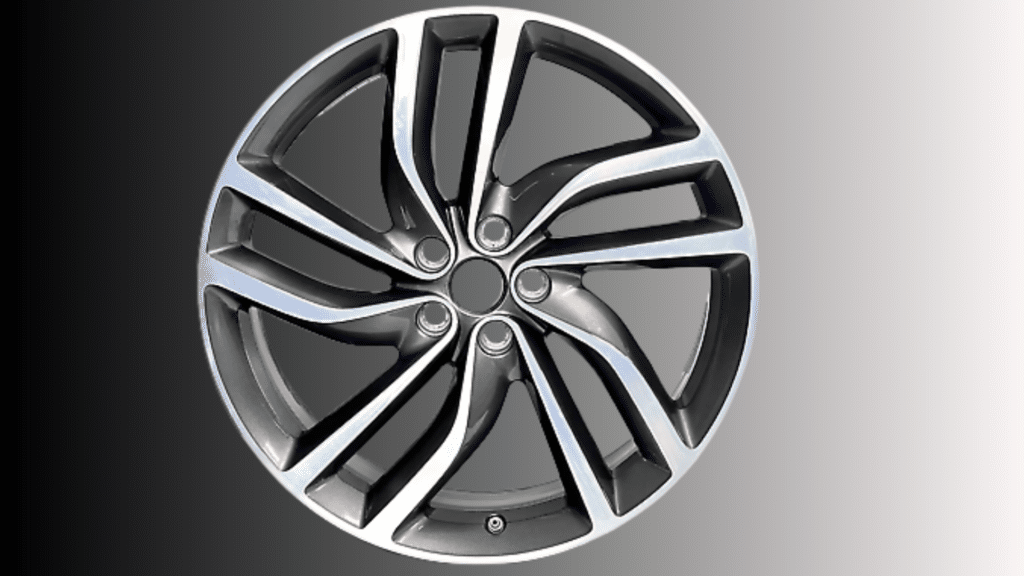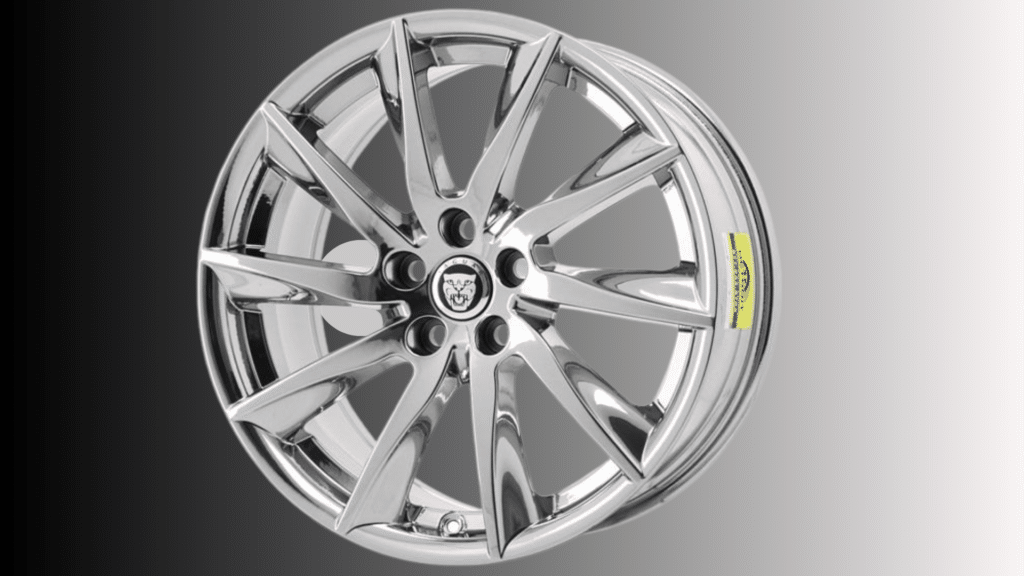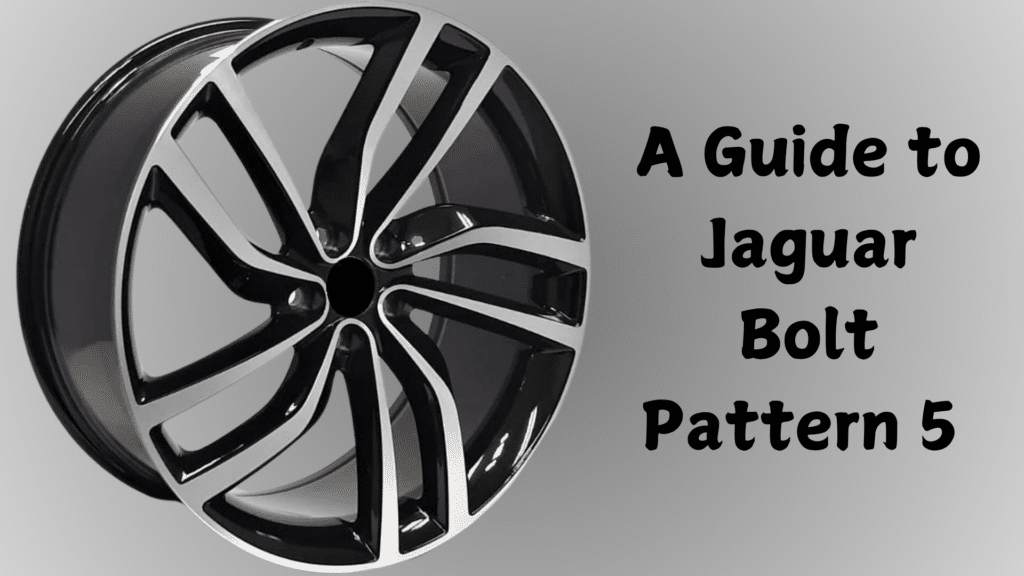Are you struggling to find the right wheels for your Jaguar? Understanding bolt patterns isn’t just about making wheels fit – it’s crucial for your car’s performance and safety.
As a Jaguar specialist with years of hands-on experience, I’ve seen too many enthusiasts make costly mistakes with wheel fitment.
In this detailed guide, we’ll walk through everything you need to know about Jaguar bolt patterns.
You’ll learn how these patterns affect your car’s handling, acceleration, and braking. No more guessing at the parts counter or wondering if those stunning wheels you found online will actually work with your model.
Whether you’re upgrading your wheels, replacing damaged ones, or just want to understand your Jaguar better, this guide has you covered.
By the end, you’ll have the knowledge to make smart decisions about your Jaguar’s wheels and avoid common pitfalls that can cost time and money.
What is the Bolt Pattern for a Jaguar?

A bolt pattern is simply the arrangement of lug holes on your Jaguar’s wheel.
Think of it as a circle with holes where the wheel attaches to your car. When I work on Jaguars, I always look at two key measurements: the number of lugs and the diameter of the circle they form.
Most modern Jaguars use a 5×108 bolt pattern. Let’s decode that: the “5” means there are five lug holes, and “108” is the diameter in millimeters of the circle these holes make. It’s like a clock with 5 points instead of 12.
However, if you own a classic Jaguar, you might have different patterns. Here’s what I’ve encountered:
- Older XJ models: 5×120.65mm pattern
- Some vintage E-Types: 4×114.3mm pattern (also known as 4×4.5″)
- Modern F-PACE and XF: 5x108mm pattern
Pro tip: When you’re measuring your bolt pattern, don’t just count the lugs. The spacing matters just as much.
I’ve seen plenty of wheels that had the right number of holes but wouldn’t fit because the diameter was off by just a few millimeters.
Understanding your Jaguar’s bolt pattern saves you time and money. When you’re shopping for new wheels, this is the first number you need to know.
If someone tries to sell you wheels with a different pattern, walk away – no adapter is worth risking your safety over.
Understanding Jaguar Bolt Patterns and Their Compatibility
How Bolt Patterns Vary Across Jaguar Models?
The bolt pattern on your Jaguar isn’t random – it’s engineered for your specific model.
Modern F-TYPE owners, you’ve got a 5x108mm pattern that’s designed for high-performance driving.
If you’re driving an older XK8, you’re working with a 5×120.65mm pattern that was standard for that era.
Factors That Affect Bolt Pattern Compatibility
When I’m helping Jaguar owners with wheel fitment, I look beyond just the bolt pattern. Here’s what really matters:
- Center bore diameter: Your wheels must match your Jaguar’s specific hub size
- Hub-centric rings: Sometimes needed to ensure perfect centering
- Wheel offset: Affects how your wheels sit in the wheel wells
- Thread pitch: The size and spacing of the lug nut threads must match exactly
Why Compatibility Matters for Safety and Performance?
I’ve seen what happens when wheels aren’t properly matched to a car. Using the wrong bolt pattern or trying to force compatibility with adapters can lead to serious issues.
Your Jaguar’s handling, braking, and overall stability depend on having the right fit. When you match the correct bolt pattern, you maintain:
- Proper weight distribution
- Accurate speedometer readings
- Even tire wear
- Optimal brake clearance
This isn’t just about making your Jaguar look good – it’s about keeping you safe on the road while maintaining your car’s legendary performance capabilities.
How to Identify the Correct Bolt Pattern for a Specific Jaguar Model?
Checking the Owner’s Manual
Your Jaguar’s manual is your first stop. Look in the “Technical Specifications” or “Wheels and Tires” section.
I always tell my clients to snap a photo of this page – you’ll thank me later when you’re wheel shopping.
Pro tip: The bolt pattern info is usually listed alongside tire sizes and wheel dimensions.
Using Online Tools and Resources
While I trust manufacturer specs, I always verify using reliable sources:
- Jaguar’s official website: Check the technical specs section
- Wheel-size.com: Enter your Jaguar’s year and model
- Dealer parts departments: They can look up your exact specifications
Remember: Cross-reference any information you find online with at least one other source. I’ve seen too many website errors to trust just one.
Measuring the Bolt Pattern Yourself
Sometimes you need to double-check things yourself. Here’s my foolproof method:
- For 5-lug patterns: Measure from the center of one lug hole to the outer edge of the hole across from it
- For 4-lug patterns: Measure center-to-center between any two adjacent lug holes, then multiply by 1.414
Important safety note: If you’re measuring the hub itself, make sure your car is properly supported on jack stands – never rely on just a jack.
By using these methods, you’ll know exactly what bolt pattern you need. This knowledge saves you from buying the wrong wheels and keeps your Jaguar performing at its best.
How to Maintain Bolt Patterns on Your Jaguar?

Proper Wheel Installation and Alignment
Getting this right is essential for your safety and your Jaguar’s performance. Here’s what I always do:
- Clean the mounting surface thoroughly – any debris can cause misalignment
- Torque in a star pattern: Start with hand-tightening, then use a torque wrench
- Check torque specifications: Usually between 85-95 ft-lbs for most Jaguars
- Re-check torque after 50 miles of driving
Critical reminder: Never use an impact wrench for final tightening – it can damage the threads and lead to uneven pressure.
Checking for Wear and Tear on Lug Nuts and Studs
During every tire rotation, I inspect these key components:
- Look for thread damage or stretching on the studs
- Check lug nuts for rounded corners or rust
- Examine the wheel’s bolt holes for an enlargement
- Verify the hub’s center bore isn’t worn or damaged
If you spot any metal shavings around your lug nuts, that’s a red flag requiring immediate attention.
Ensuring Regular Maintenance to Avoid Pattern Issues
My maintenance schedule that’s kept countless Jaguars running smoothly:
- Check lug nut torque every 3,000 miles
- Inspect for corrosion during seasonal tire changes
- Clean and lubricate threads annually (use the right lubricant!)
- Replace any damaged lug nuts immediately – never wait
Remember, proper maintenance isn’t just about preventing problems – it’s about preserving your Jaguar’s legendary handling and ride quality.
A well-maintained bolt pattern system ensures your wheels stay exactly where they should be, mile after mile.
List of the Correct Bolt Pattern for Different Jaguar Models
A comprehensive table showing bolt patterns across the Jaguar lineup. I’ve included the most common configurations based on my experience:
| Model | Years | Bolt Pattern | Center Bore | Lug Type |
|---|---|---|---|---|
| XE | 2015-Present | 5x108mm | 63.3mm | Lug Bolt |
| XF | ||||
| – 1st Gen | 2008-2015 | 5x108mm | 63.3mm | Lug Bolt |
| – 2nd Gen | 2016-Present | 5x108mm | 63.3mm | Lug Bolt |
| F-PACE | 2016-Present | 5x108mm | 63.3mm | Lug Bolt |
| E-PACE | 2018-Present | 5x108mm | 63.3mm | Lug Bolt |
| XJ | ||||
| – X350/X358 | 2003-2009 | 5x108mm | 63.3mm | Lug Bolt |
| – X351 | 2010-2019 | 5x108mm | 63.3mm | Lug Bolt |
| F-TYPE | ||||
| – All Models | 2013-Present | 5x108mm | 63.3mm | Lug Bolt |
| – SVR Models | 2013-Present | 5x108mm | 63.3mm | Lug Bolt |
Important Notes:
- Some special edition models might have different specifications
- Always verify your specific model’s requirements, as specifications can vary by region
- Factory wheel sizes may vary within the same model year
- The center bore measurement is critical for proper fitment
Comparisons Between Jaguar and Other Brands’ Bolt Patterns with Prices
Luxury Brand Bolt Pattern Comparison
| Brand | Common Models | Bolt Pattern | Approx. OEM Price/Wheel | Aftermarket Starting Price |
|---|---|---|---|---|
| Jaguar | F-Type, XF | 5x108mm | $800-1,200 | $200-450 |
| BMW | 3,5 Series | 5x120mm | $600-1,100 | $180-400 |
| Mercedes | C, E Class | 5x112mm | $750-1,300 | $200-500 |
| Audi | A4,A6 | 5x112mm | $700-1,100 | $190-450 |
| Volvo | S60,XC90 | 5x108mm | $500-900 | $175-400 |
Price Analysis and Market Availability
I’ve noticed these key differences in the market:
- OEM Wheel Costs:
- Jaguar wheels typically cost 15-20% more than BMW equivalents
- Mercedes-Benz usually charges the highest premium
- Volvo shares Jaguar’s bolt pattern but offers lower-priced options
- Aftermarket Options:
- A shared 5x108mm pattern with Volvo means more aftermarket choices
- Quality aftermarket wheels range $200-450 per wheel
- High-performance options can exceed $600 per wheel
Aftermarket Wheel Availability
Based on my experience with suppliers:
- Popular Brands Compatible with Jaguar (5x108mm):
- Avant Garde: $250-400/wheel
- BBS: $400-800/wheel
- HRE: $1,000-1,500/wheel
- Vossen: $500-900/wheel
Pro tip: The shared 5x108mm pattern with Volvo has actually helped keep aftermarket prices competitive for Jaguar owners. You’ve got more options than BMW owners, who are often limited by their unique 5x120mm pattern.
Remember: While cheaper options exist, I always recommend sticking with reputable manufacturers.
The money you save on budget wheels often leads to costly issues down the road.
Conclusion
Understanding your Jaguar’s bolt pattern isn’t just about fitting new wheels – it’s about keeping your car safe and performing at its best.
Throughout this guide, we’ve covered everything from measuring your bolt pattern to maintaining your wheel system properly.
Remember that most modern Jaguars use a 5x108mm pattern, but always verify your specific model’s requirements.
We’ve seen how proper wheel fitment affects everything from handling to brake performance.
The right bolt pattern ensures your wheels stay secure and your car drives the way it was engineered to. Don’t compromise on quality or try to force compatibility – the risks aren’t worth it.
Ready to upgrade your Jaguar’s wheels? Take these insights to your local Jaguar specialist or trusted wheel dealer.
If you need help, save this guide for reference or reach out to a certified Jaguar technician who can ensure you get exactly what your car needs.
Frequently Asked Questions
How Much Should I Spend on a Quality Wheel Set for My Jaguar?
For a set of four quality wheels, budget between $800-1,800 for good aftermarket options, or $3,200-4,800 for OEM wheels. From my experience, the sweet spot for quality and value is around $1,200-1,500 for a complete set of aftermarket wheels.
Will Modern Jaguar Wheels Fit on Older Models?
Not always. While modern Jaguars (post-2000) typically use the 5x108mm pattern, older models might have different patterns. I always tell my clients to verify their specific model’s specifications before making any purchases.
Do I Need Hub-Centric Rings When Installing New Wheels?
It depends. If your new wheels have a larger center bore than your Jaguar’s hub, you’ll need hub-centric rings to ensure proper fitment. I’ve seen too many vibration issues from wheels installed without proper hub centering.
How Often Should I Check My Wheel Bolt Torque?
I recommend checking torque after the first 50 miles of installing new wheels, then every 3,000 miles or during tire rotations. For high-performance driving, check more frequently.
What’s the Difference Between Lug Bolts and Lug Nuts?
Most Jaguars use lug bolts, which thread directly into the hub, unlike lug nuts that attach to wheel studs. Never swap between these systems – they’re engineered specifically for your vehicle’s design.


